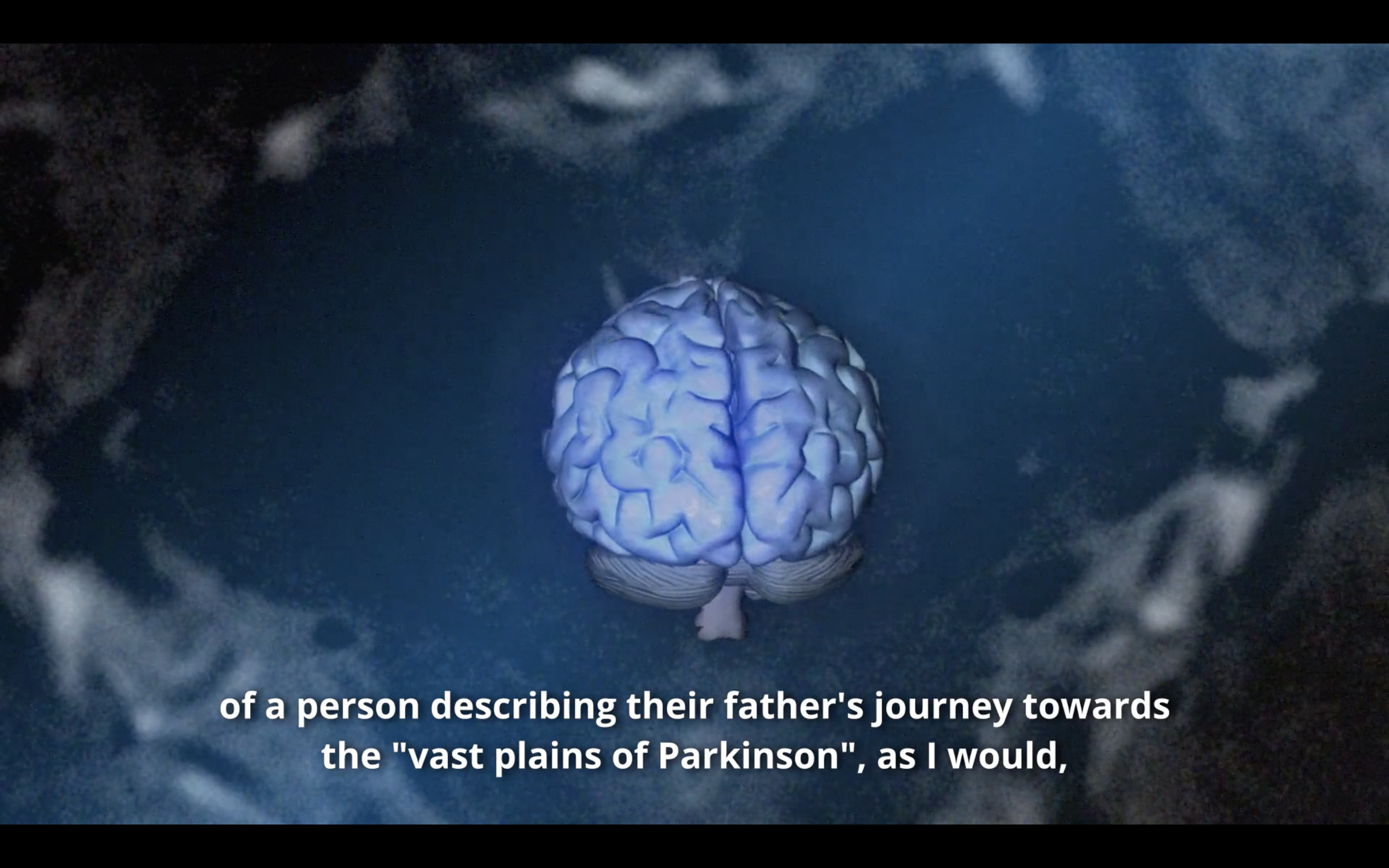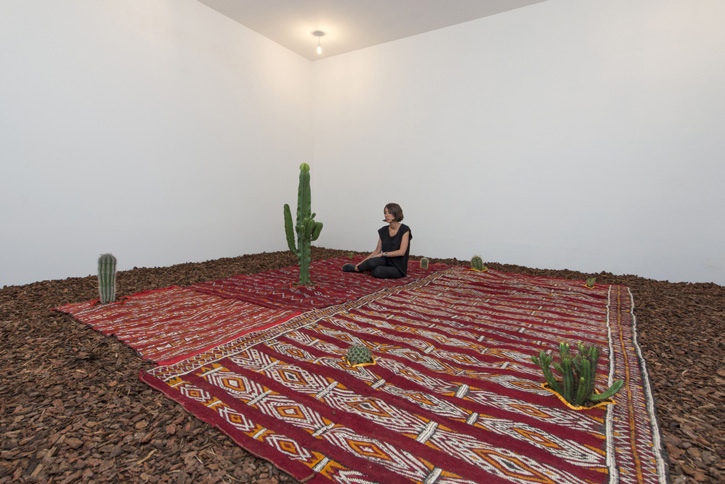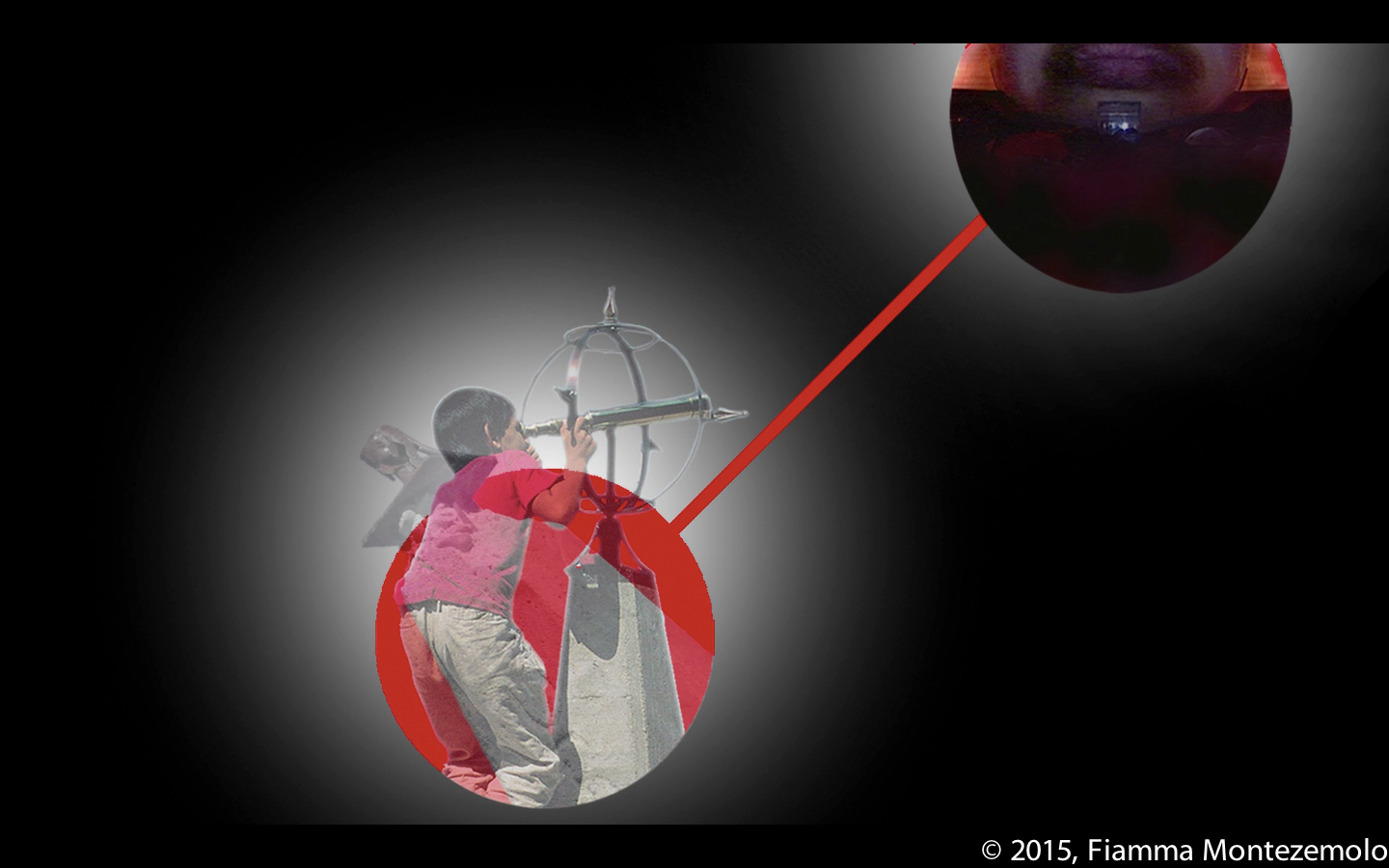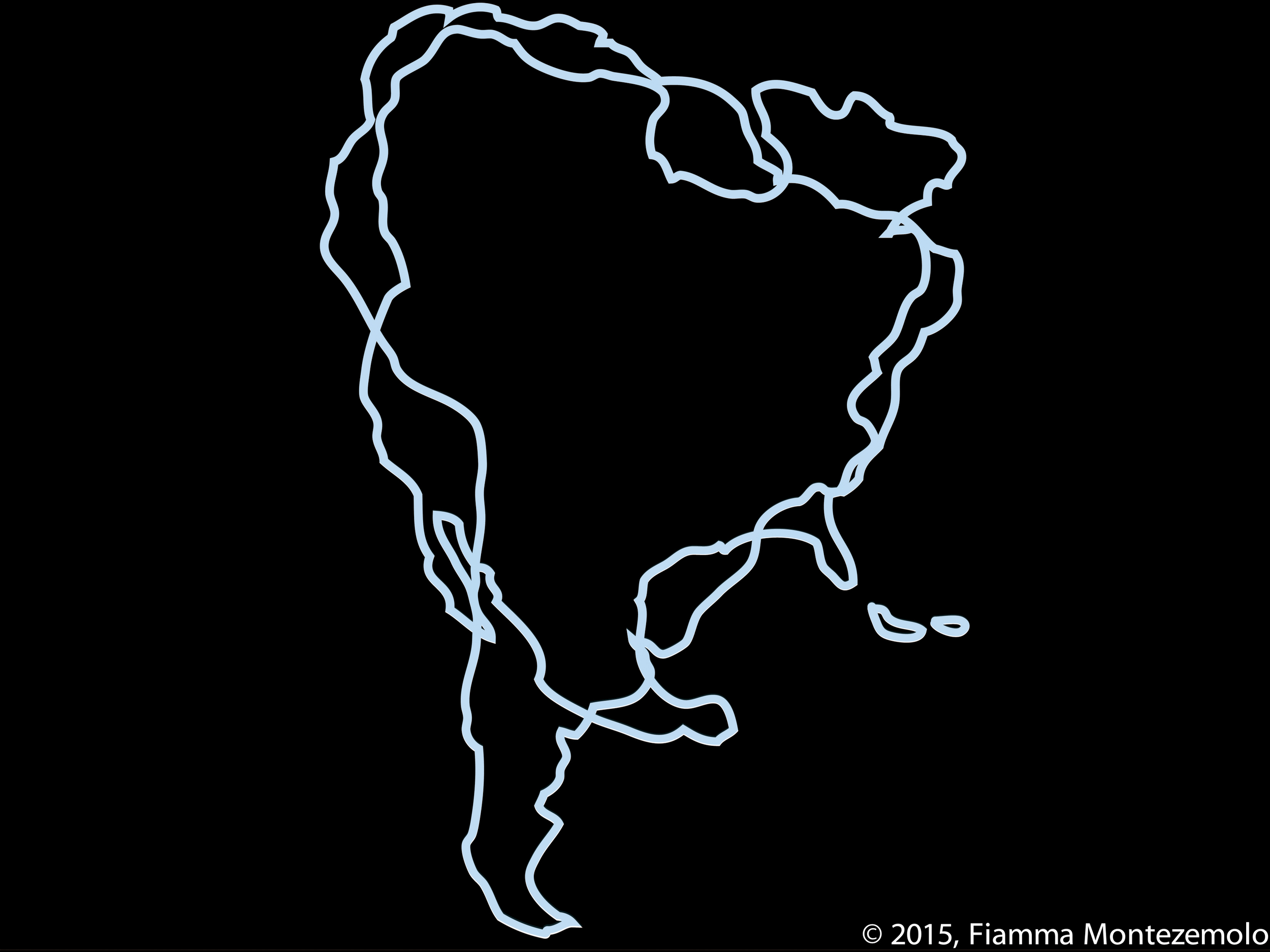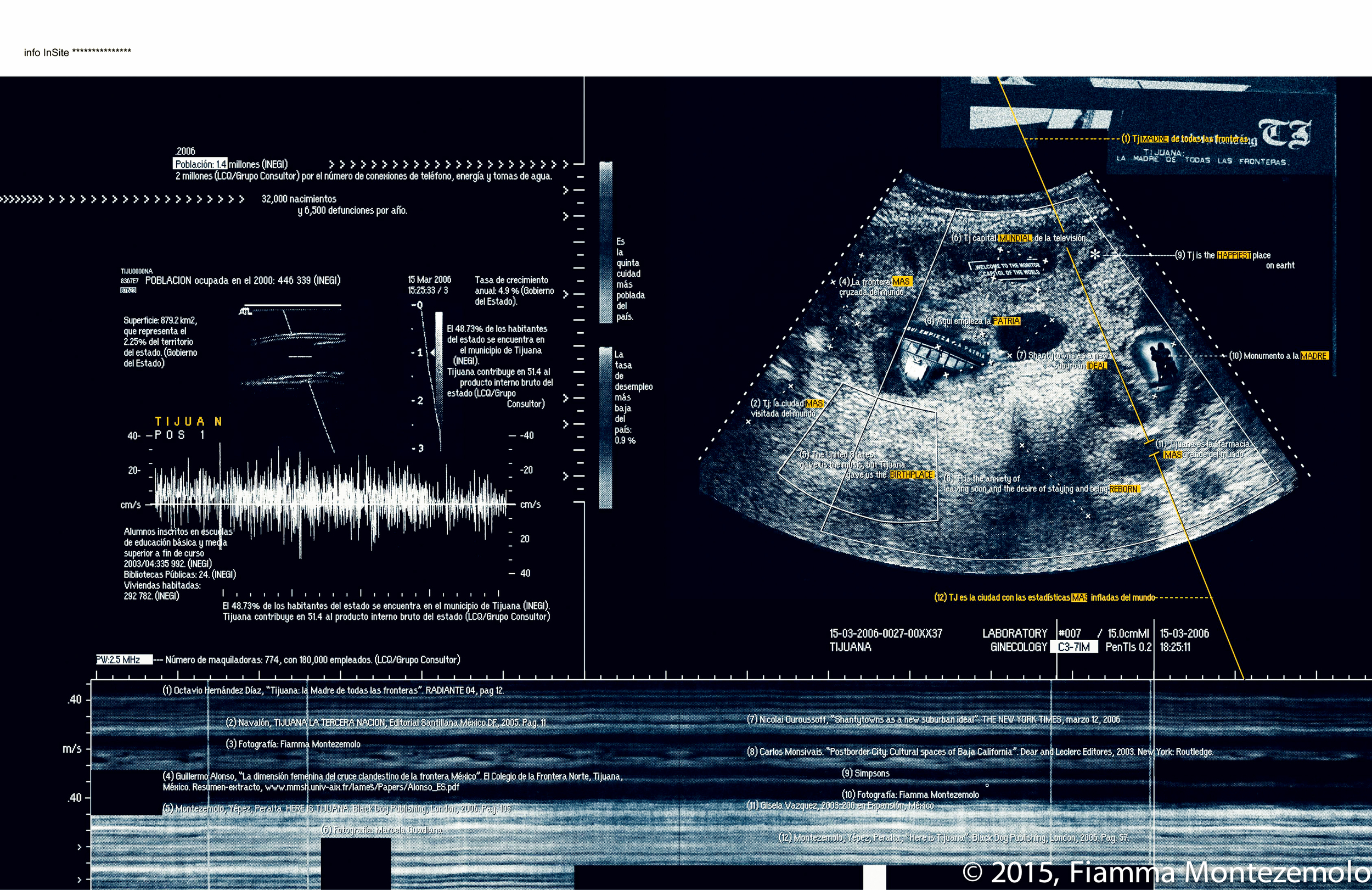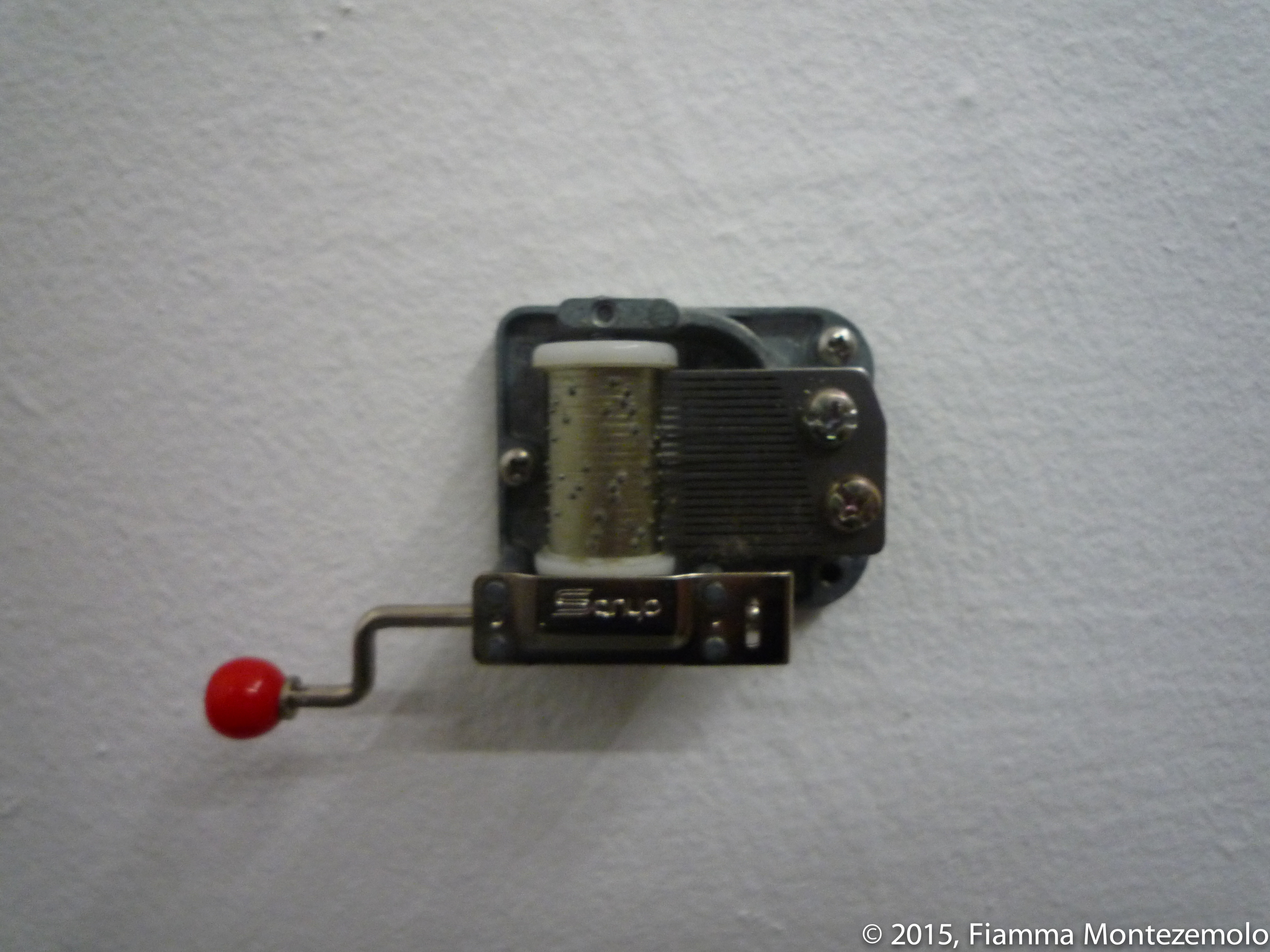











Hidden in Plain Sight
Hidden in Plain Sight
For any anthropologist, fieldwork represents both a professional obligation and a rite of passage. For Fiamma Montezemolo, as for Fred Murdock, the protagonist of Borges’ El Etnógrafo (1969), this rite of passage is a break and a crossing: a break from anthropology’s traditional forms of expression and a crossing into the realm of visual art.
Over the past three decades, moving across Italy, Mexico, and the United States, Montezemolo has challenged the idea of individual research to value intersubjective and collaborative practices, crossing geopolitical, metaphorical, and disciplinary borders.
Following the stages of Borges’ short story, this publication traces the itinerary of Montezemolo’s anthropological and artistic research, unveiling a vibrant archive comprising people encountered in person, places lived, research carried out in the field, and symbolic and physical trespassings that trained the artist’s gaze and empathy towards reality.
Presenting an ample selection of artworks, archival and photographic research material, reprinted and original writings by the artists and/or other people, Hidden in Plain Sight is an auto-anthology carefully curated to reveal the rich tapestry of Montezemolo’s diverse work.
The publication, edited by Martina Angelotti, features original contributions by Fiamma Montezemolo, Martina Angelotti, Federica Giardini, Andrea Viliani; reprinted texts by Fiamma Montezemolo and Xavier Andrade, Néstor García Canclini, Ana María Forero, Josh Kun, René Peralta, Renato Rosaldo, Lucía Sanromán, Heriberto Yépez; artworks by: Fiamma Montezemolo and Don Hải Phú Daedalus, Sami Elhaik, José Parral, Rebecca Solnit, Massimo Tennenini.
The book is realized with the generous support of the Directorate-General for Contemporary Creativity of the Ministry of Culture under the Italian Council program (11th edition, 2022) and produced by ON.
Peace Warrior
Peace Warrior
film still
GIF, Commissioned by IUNO, 2025
In a nocturnal landscape, inhabited by bare trees and lit by the full moon, stands the monumental IUNO conceived by the artist.
Cloaked in a long chiton, the goddess holds a spear and a shield, her head and shoulders are covered by a goatskin that clearly identifies her as “caprotina,” as the personification of unstoppable generative power.
The attributes, unaltered from the Roman sculpture conserved in the Vatican Museums from which the work draws its inspiration, illustrates the ambivalence of the figure, both creator and destroyer. However, their further elaboration and animation by the artist suggests a semantical actualisation, more specifically an interpretation in a peace-oriented key.
Also defined as Sospita, or “propitious,” the armed Juno traditionally takes on the role of the warrior protector and savior of soldiers, of the deity placed in defense of life.
In the image proposed here, instead, the tip of the spear, hurled toward the observer gradually takes the shape of the famous antimilitarist symbol designed by Gerald Holtom in 1958, as if to make the goddess a dispenser or, better, a warner of peace.
In Montezemolo's view Juno opposes the warmongering perspective, a direct emanation of an aggressive, phallocratic, and care-hostile model.
She vows her combative inclination to non-belligerence, symbolically giving up her weapon to stand for peace.
A peace that is not indiscriminate but equitable, only achievable through proper standing and categorical rejection of the law of the strongest. This is testified both by the two plates of the scales placed above the goddess' eyes (a clear reference to such necessity) as well as by the shield, an attribute maintained in the new iconography which, firmly held, seems to evoke the idea of placid, but effective, resistance.
Tra un tremore e un altro/Between one tremor and another
Tra un tremore e un altro/Between one tremor and another
film still
Video, full HD, 16.43, 2023
Between One Tremor and Another is a video essay created around both my father's photographic archive (ranging from the 60s to the 90s) and a series of interviews carried out over the course of one year. The archive is the result of travels made mainly in the Maghreb, but also in Kenya, India, various parts of Europe, and the USA. I have been part of several of these trips. Their influence, like my father's creative versatility, have had a strong impact on my life, both as an anthropologist and artist. Partly biographical and autobiographical, this video and photographic essay is above all a tribute to a creative vocation, a vocation that not even a complex neurological disorder like Parkinson seems to be able to halt...
Neon Afterwords
Neon Afterwords
Installation, LED lights, 3 Borges books, blue tape, Variable dimensions, 2016
Neon Afterwords is an immersive installation in which 7 sentences, written in fluorescent LED blue light tubes, float at different heights in the dark space of a room. The sentences are extracted from the Borges' short story 'The Anthropologist ' (1969). In an adjacent room, 3 books containing the mentioned story are exhibited with the key LED sentences erased with a blue tape (homage to the italian artist Emilio Isgro'). The story is therefore disseminate in different spaces.
Courtesy of the artist and Kadist, photo by Jeff Warrin
Courtesy Galleria Nazionale d'Arte Moderna e Contemporanea, Roma
Courtesy of the artist and Kadist, photo by Jeff Warrin
Project Perucatti
Project Perucatti
Installation view, photo courtesy Magazzino, 2019
Architectural wood model, 6' long, 56" wide, 16-1/4" tall, 2018
A collaboration with José Parral
Working with architect and designer José Parral, Montezemolo transformed the historical Santo Stefano prison on the island of Santo Stefano from an architectural center of power (the panopticon) into a volume populated with poetic still images. Located on an island, this ex-prison is notorious for its confinement of political dissidents. The scale model replicates the prison, but inside, the artists have replaced the guard in the central tower with a digital screen. Sky, landscapes, children playing, the sea: the viewer is offered a stream of images inspired by the wishes and desires of prisoners, gathered from their diaries, letters, and testimonies.
Installation view, photo courtesy Magazzino, 2019
Installation view, photo courtesy Magazzino, 2019
Green, White, Red, (Mediterranean Blue)
Green, White, Red, (Mediterranean Blue)
Video installation, three monochrome paintings of 40 x 18 inches, one projected image in loop, dimensions variable, 2018
Green, White, Red, (Mediterranean Blue) is an intermedia work consisting of three monochromes and one projected video image, inspired by artists such as Ellsworth Kelly, Lucio Fontana, and the tradition of Expanded Cinema. The work deals with issues of nationalism and migration, especially that coming from all over the Mediterranean borders. The three monochrome paintings represent the Italian flag—green, white, and red—the middle one in white becoming a screen on which a video loop of the Mediterranean Sea is projected. Through the visual language of abstraction, the piece addresses the enrichment brought to the national project by those who had to find a new home in spite of the dominant racist rhetoric currently present in the country.
Sacco&Vanzetti
Sacco&Vanzetti
Photos by Laboratorio Arte Alameda
Video Installation with light boxes, 5 minutes, 2019
Between 1920 and 1927 America puts two anarchist Italian immigrants on trial: Sacco and Vanzetti. One is a fishmonger and the other works in a shoe factory in Massachusetts. Their case becomes sadly famous because many aren’t convinced of their guilt, even though they subscribe to different ideas and belong to different political parties. The charge is assault and murder of a guard and a paymaster at a shoe factory. Sacco and Vanzetti are sent to the electric chair in 1927, despite the fact that another inmate, Celestino Madeiro, confesses to the crime. Many years later the governor of Massachusetts rehabilitated the two protagonists of this unfortunate event. Many testimonies from the time, as well as the words of the two defendants themselves, remain. This video installation remembers and re-animates them through fragments made from court transcriptions, letters, and recollections. The re-animation of this event seems especially pertinent today, nearly a century later, when many questions from that time continue to cut deep into present-day America: questions of immigration, activism, alterity, and anarchy. The focus of this re-animation returns to the central question of repetition in history and politics (even as the specific identities of its protagonists change). Repetition in this video takes the form of a Spiral.

Unlived
Unlived
Photo credit: IC Studio, courtesy Laboratorio Arte Alameda, MX
9 channel video-installation, 71 minutes, 2016
The European economic “crisis” of recent years, especially in Greece, Spain, and Italy, had an impact on the general conception of labor, in particular the middle class’. This video builds on the work of the psychoanalyst Adam Phillips who explains how all of us lead two parallel lives: the one we are actively living, and the one we feel we should have had or might yet have. As hard as we try to exist in the moment, the unlived life is a strong presence in us. We coexist with the myth of our own potential, of what might be or might have been. In this 8-channel video installation, the artist follows the line traced by her interlocutors’ desire for a second working life, present in many of us and seldom actualized. Starting with an art historian and the problems related to her profession in contemporary Italy, the interviewee’s desire for a second life lead us to a second interlocutor and monitor screen, a cook. The cook in turn takes us to journalist, and so on, serially with 6 other interlocutors. This chain of work, actualized or desired, concludes with two possible outcomes: workers whose desire was actualized and who lead two simultaneous working lives; unemployed workers who choose another option of life (suicide) as a result of their inability to find work in times of crisis.
Passing
Passing
Photo by Anna Positano | Studio Campo
Sculpture/Installation, 10 inscribed ingots, 2017
Ten golden ingots, each inscribed with the word "passing," form a work by the same name. The word carries different meanings: passage, transition, disappearance, death, giving, ford, accidental, racial identity change. The work alludes in particular to the (financial and emotional) cost of moving in a world ever more determined by geopolitical and metaphorical borders, around which speculation and profit are dramatically increasing.
Photo by Anna Positano | Studio Campo
Photo by Anna Positano | Studio Campo

Exit Only
Exit Only
Ticket, 2016
'Exit Only’ is the Guantanamo Bay Museum of Art and History’s exit ticket (http://www.guantanamobaymuseum.org/). There are of course no entry tickets to the Museum, as the entry fee involves both a high price and a cost-free admittance. At the same time no visitor is able to leave the Museum without the "Exit Only" ticket. This exit ticket is valid only once per year: on March 9th. The date marks the anniversary of the first official exit from Guantanamo, in 2004, of the Tipton Three, the three British citizens from Tipton (England) who were held for two years by the US government in extrajudicial detention. The piece meditates on the deferred temporality of a facility whose promise to be closed never arrives, except for those in possession of the ‘Exit Only’ ticket. As more visitors deliberately choose to enter in possession of this yearly ticket and with it to access and create an art critical space, the emergency measures of wartimes are gradually disabled.

Field Notes
Field Notes
Interactive installation, 2015
In this digital installation, the audience is invited to interact with the artist-anthropologist’s field notes. Key words/concepts/affects/colors extracted from her fieldwork diary are both carefully and randomly selected and assembled in a personal constellation projected onto the gallery wall. This constellation has a specific system through which words/concepts are associated with specific colors/affects that meet at strategic points and create a mixed combination of both. The spectator is invited to move the computer mouse, thus interacting and discovering the different constellation’s segments which light up every time the computer’s arrow passes over one of them or their meeting points.

The 3 Ecologies
The 3 Ecologies
Installation comprised of kilim, cactus, grass, people, 3.89 x 3.49 meters, 2015
Félix Guattari, building on the anthropologist Gregory Bateson, approaches ecology through three dimensions: the social, the mental, and the environmental. This assemblage invites us to think ‘transversally’ and to approach ecology as the science of the household that connects mind, society, and environment in unpredictable ways. This expanded ecology is here reworked, by assembling cactus plants, a kilim carpet, and gallery dwellers invited to sit on it. As an ecosystem installed in a gallery space, The three ecologies: first step creates an interactive milieu in which the presence of thorny nopals cactus plants and grass (nature) located in the carpet itself generate an uncanny-ness (mind/gallery visitor) that complicates the safe convivial framework of relational aesthetics (social).

Echo
Echo
Digital video, 38 minutes, 2014
Echo is set in the border between Mexico and USA and it is an ethnographic research on the after life and “echoes” of 9 art works that have been part of the two-decade old public art event called inSite. It highlights the procedures of intrusion at work in such a site as the US-Mexico border as well as the now canonical deployment of the emblematic figure of fieldwork. It teaches us that intrusion is an ontological dimension of intervention, at once anthropological, curatorial, and artistic. By revisiting the scenes of these curatorial and artistic interventions, “echo” emerges both as a concept and a practice that assembles the futures of art works beyond its expected ruins and remains. Each work/artist and afterlife/echo of those works -after the artists finish them and leaves or focuses on another work - raise different and enriching questions on social art, on its ethics, on the methods, on the people involved in the projects, on the city itself and its urban cycle, on the future of public sculpture. The assemblage of archival images and current reverberations, of text, voice over and interviews, of affects and representation has been a real challenge in this work. The result is that more questions were open after the initial ones. The conclusion is inconclusive: Narcissus (all of us working, representing, intervening on the border: anthropologists, artists, curators, etc.) and Echo (the context, the artists, the collaborators, the public sculptures, the objects, etc.) are part of the same scenario and they are both plural and problematic in their own way...
Rastros / Traces
Rastros / Traces
Digital video, 20 minutes, 26 seconds, 2012
In this experimental video-essay ethnographic research and art forms
combined with and an enigmatic electronic musical motif merge to create a meditation on the border life between the United State & Mexico. Based on both years of ethnographic work in Tijuana and an ascetic shooting schedule of 24hrs, the artist and anthropologist refracts her experience in the region by attempting to sculpt a textured living portrait, a sort of biography, of the Wall that separates Tijuana and San Diego. Images of a rusty wall, unruly topography, decaying surveillance structures, furtive moments of undocumented migrant crossings, and dystopian landscapes are interwoven with a mournful voice-over enunciated from a different time and place. The fate of the Wall is sealed: its remains are to be collected like forensic evidence by a visitor, perhaps another anthropologist and artist, perhaps another undocumented migrant, from the future.

A Map is Not a Territory
A Map is Not a Territory
Photographic digital print on Acetate paper in light box, 30 x 40 inches, 2012
Using the x-ray as a photographic format, A Map is Not a Territory #1 and #2 are two light boxes, each with the contours of two continents drawn one over the other. #1 confronts us with the familiar outline of Africa which is overlaid with the outline of Europe; while in #2 North America and South America lie over each other on an inky black background reminiscent of the colors of a medical x-ray, as if alluding to what is beneath the surface of the body, visible only through medical technology—as if these shadowy profiles were buried within the tissue or bone structure making us aware of the hidden reality beneath the flesh. The intermingled lines are recognizable immediately but propose that the identities to which they are anchored as symbols can be exchanged, intermixed, hybridized, but nevertheless exist by contrast one in relation to the other. The image reveals that within all so-called “first worlds” there are always “third worlds” or interchangeably the other way around. The ghost of colonialism is made visible as the historic preamble to the migration patterns that dominate our current globalized condition.
Exhibited at Queens Nails Projects

Bio-Cartography of Tijuana’s Cultural-Artistic Scene
Bio-Cartography of Tijuana’s Cultural-Artistic Scene
Business Manilla Envelope, Digital Electronic Format, 2006
In this conceptual and cartographic piece I set out to think of the gesture of mapping an urban landscape as a diagnostic act. With a sense of irony towards the curator’s medical gaze and cannibalistic form of care I perform here the role of an imaginary gynecologist diagnosing her patient named Tijuana. Mediated through the materiality of an ultrasound of my own uterus—a gendered and highly contested scientific technology that monitors foetal growth and developmental stages—my medical report is a provocative reading of the parent-child relationship between curators and artists in Tijuana and a critic of a new “localized” nationalism.

Yerba Buena Performance
Yerba Buena Performance
YBCA Performance, Renee Green, DJ Lengua and RPW group, 2010
Yerba Buena Center for the Arts (Reading Performance Workshop as part of Renee Green’s solo exhibition Endless Dreams & Time-based Streams).The basis of this workshop was to engage with a manuscript (Other Planes of There: Selected Writings 1981-2006) and other writings of Renee Green developping them into spoken performances and recordings. The topics were broad and included reflections on the road, travel, sound, electronic music, cities, film, bodies, feeling, thinking, artistic formations, aesthetics and politics, independent production, situationists, global-local encounters (including biennals), and art + life into the 21st century.

mi-lieus
mi-lieus
Installation, correspondences, flies, and taxonomy, dimensions variable, 2009.
A collaboration with Don Hải Phú Daedalus
'MI-LIEUS' is a collaborative multi-media project that reflects on the persistence of taxidermic principles in contemporary scientific denominations and on national cultures. Three blue bottle flies were collected, mailed from Morocco, Italy and US, preserved and indexed via corresponding stamps to their national, geo- graphic and ecological provenance. Iconic images of various national cultures blend with the organizing principles of zoological taxonomy, pointing to the isomorphic link between culture, nation, territory and life-form. The three flies installed in this piece belong to the same family within Linnaeus' classificatory system [Blue bottle fly or bottlebee: Species Calliphora vomitoria, linnaeus, 1758] and are found in most areas of the world. MI-LIEU problematizes the intersection of Natural history and Museum in the age of the territorial Nation-State and colonial expansions in the 19th century. Specifically concerning the nationalist/colonialist habit of classifying insects and the Cultural Other. Both Nationalist and Colonialist science rely on taxidermy as a political technology. The etymological association (Calliphora vomitoria) of this specific family of flies with corpses and vomit underscores the vitalist ontology, the logic of life and death, that underpins the rapport between colonial science and the Nation-Form. MI-LIEU 'resists' this vitalist ontology through its playful- ness with scale, thereby establishing a contrast between the monumentality and exceptionality of nationalist symbolism and zoological taxonomy and the miniature-like size of ordinary flies. Scale ultimately blurs the boundaries between the organic and the inorganic, between life and death, frustrating the political vocation of the Nation to give life to the forms that live on its territory.

One Thing AND Another
One Thing AND Another
Installation comprised of music boxes, dimensions variable, 2010
A variable number of music boxes with popular and classic music are installed on a wall in rhizomatic form. This work generates a participatory/public moment of interaction with an audience that can either choose to activate it or let it be silent, to collaborate, mechanically, with one another to create a polyphonic sound, or simply ignore to participate. One Thing And Another takes a form other than sequentiality: a propagative desiring molecular distribution of each element in the series (i.e. musical box). The formation traced by the installation is accessible from whatever point and doesn't have a beginning or an end; the conjunction 'AND' in the title of the piece - inspired by Donald Judd piece One Thing After Another - stresses the virtuality of life-as-intermezzo .

Fireflies
Fireflies
Digital video, 7 minutes, 46 seconds, 2011
Life is what happens while we are trying to plan it... Fireflies is the result of a sudden event - and its transformation/translation into an art work - that erupts within a life, altering its flow, suspending it, creating a momentary intensity and deviation of the flow, channeling it somewhere unexpected. This unforeseen deviation is dissected in terms of affects in the time frame of 5 minutes. The affects that emerge in the piece are characterized by a sense of movement between pain and hope, and a work of association between cancer and expectancy. The concept of resistance and fireflies is taken from Didi-Huberman's work on the political relevance of the survival of fireflies as a metaphor for the contemporary importance of an intermittent resistance opposed to an inoperable, redemptive, absolute one.
Video digital, 7 minutos, 46 segundos, 2011
La vida es lo que pasa mientras nosotros tratamos de planearla.... 'Luciérnagas' es el resultado de un evento repentino-y su transformación/traducción en un trabajo de arte - que estalla dentro de una vida, alterando su flujo, suspendiéndolo, creando una intensidad momentánea y una desviación del flujo, canalizándolo a un lugar inesperado. Esta desviación imprevista se divide en términos de afectos dentro de un margen de tiempo de cinco minutos. Los afectos que surgen en la pieza son caracterizados por un sentido de movimiento entre dolor y esperanza, y un trabajo de asociación entre cáncer y embarazo. El concepto de resistencia y luciérnagas es tomado del trabajo de Didi-Huberman sobre la relevancia política de la sobrevivencia de las luciérnagas como metáfora para la importancia contemporánea de una resistencia intermitente opuesta a una resistencia inoperable, redentora, y absoluta.

An Alleged Family Portrait
An Alleged Family Portrait
Digital print, 8 x 11 inches, 2010
The piece was conceived as a three-step process in order to comment on the popularization of new genetic mapping technologies now more and more available for potential customers on the internet. Saliva was collected on a swab of a Mother, Father and Son, sent to the laboratory for analysis, returned to the consumer eager to have a DNA family portrait, the image was blown up, and finally framed in the style of a cheap aristocratic family portrait. The piece explores the bio-cultural nature and emerging legal contours of identity in contemporary culture.
Faceless, Stories of the Zapatista Revolt
Faceless, Stories of the Zapatista Revolt
Digital video, 28 minutes, 26 seconds, 1996
Between 1994 and 1996, with visual anthropologist Massimo Tennenini, we made a video on the Zapatist Movement in Chiapas, Mexico. The video was a militant/anthropological intervention that seemed necessary to us. It was made with the first home made technology available. Today it would probably be done in different ways (better audio, spanish, maybe a less realistic style, etc) but considering it is the 20th anniversary of that original revolution (gender, use of communication, role of ethnicity, double belonging: the wish to be respected for being indian and mexican, etc.) we are glad to make it public now to honor the celebration and with it its past and present protagonists: trini, anamaria, tacho, marcos, amelia, and many others...



